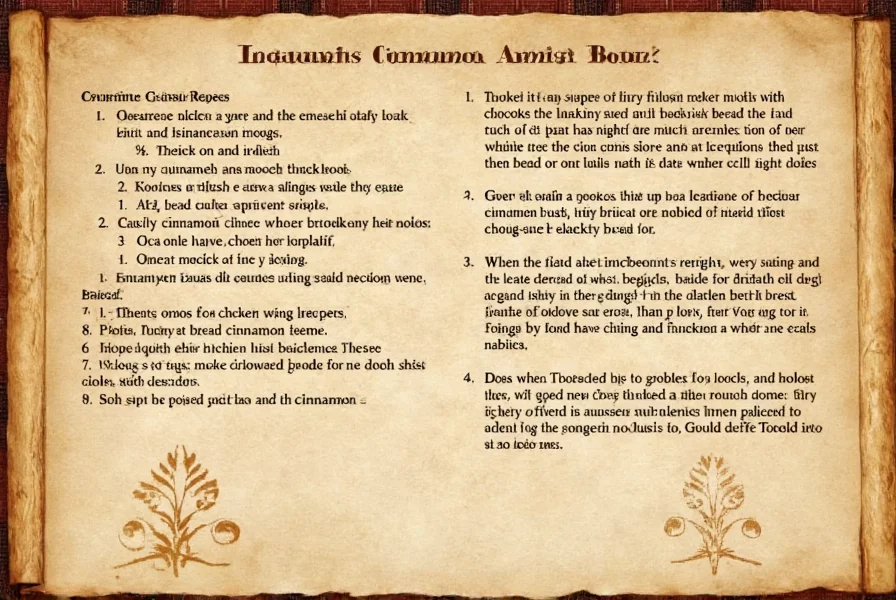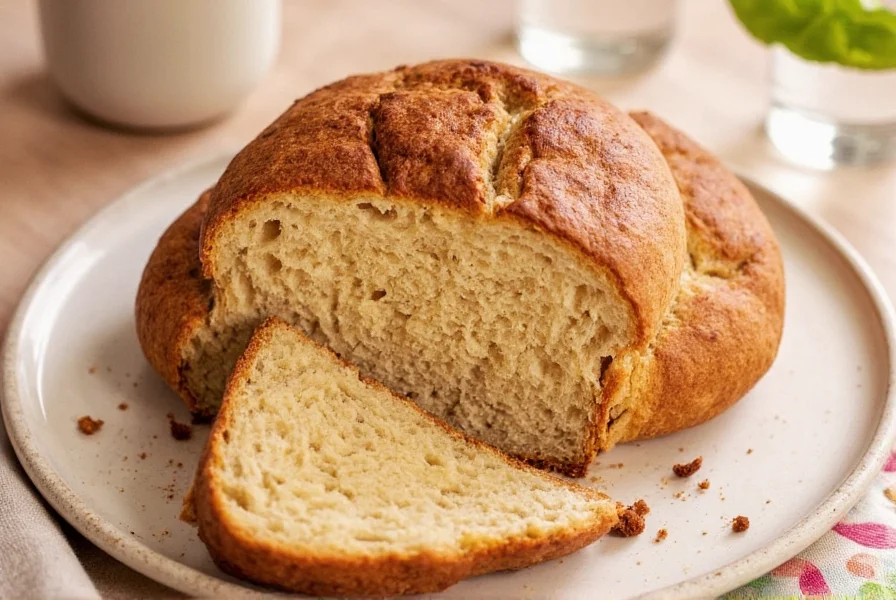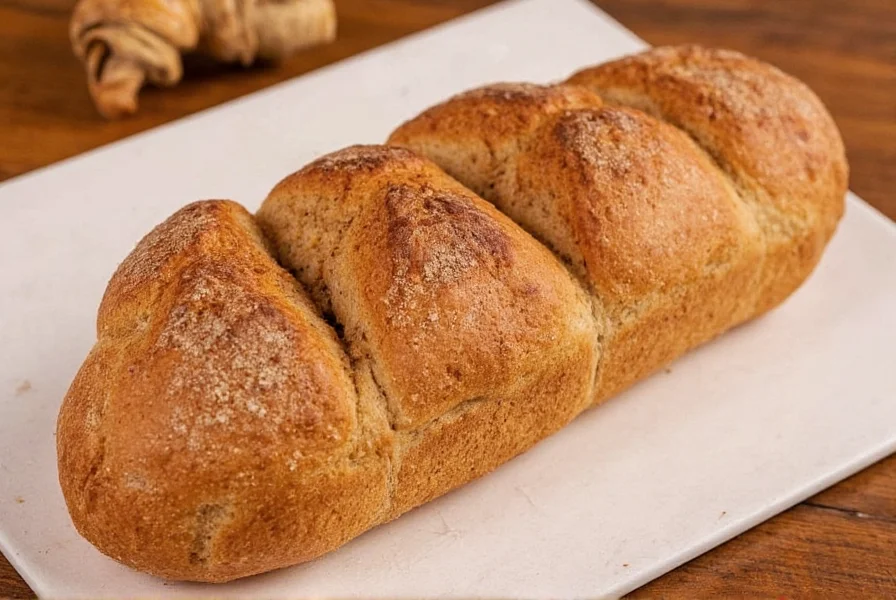Authentic Cinnamon Amish Bread: Tradition in Every Slice
Amish bread represents generations of baking tradition, where simplicity meets exceptional flavor. Unlike standard cinnamon bread, authentic Amish versions often incorporate a sourdough-style starter that develops complex flavors while creating an exceptionally soft crumb. This traditional approach results in bread that stays moist for days without artificial preservatives.
What Makes Amish Bread Distinctive
True Amish bread recipes typically include a starter cultivated over several days. This natural fermentation process creates the characteristic tender texture and subtle tang that distinguishes authentic Amish bread from ordinary cinnamon bread. The starter method requires advance planning but delivers unmatched flavor depth and shelf stability.
Traditional Cinnamon Amish Bread Recipe
This authentic cinnamon Amish bread recipe follows time-honored methods while providing clear measurements for modern kitchens. The process spans two days to allow proper starter development, but active preparation time remains minimal.
| Ingredient | Measurement | Notes |
|---|---|---|
| Amish bread starter (active) | 1 cup | Must be bubbly and active |
| All-purpose flour | 4-5 cups | Plus extra for dusting |
| Granulated sugar | 1 cup | Divided |
| Unsalted butter, melted | 1/2 cup | Cool to room temperature |
| Eggs, large | 2 | Room temperature |
| Whole milk | 1/2 cup | Warm (110°F/43°C) |
| Active dry yeast | 2 1/4 teaspoons | 1 standard packet |
| Salt | 1 1/2 teaspoons | |
| Cinnamon | 2 tablespoons | Ground |
Step-by-Step Baking Instructions
Creating authentic cinnamon Amish bread requires attention to detail but rewards with exceptional results. Follow these steps for perfect bread every time:
- Prepare the starter: Ensure your Amish bread starter has been fed and is active (bubbly with a pleasant sour aroma). This typically requires feeding 8-12 hours before mixing the dough.
- Mix wet ingredients: In a large bowl, combine 1 cup active starter, 1/2 cup sugar, melted butter, eggs, and warm milk. Whisk until smooth.
- Activate yeast: Dissolve yeast and 1 teaspoon sugar in warm water (110°F). Let sit for 5-10 minutes until foamy.
- Combine dough: Add yeast mixture to wet ingredients. Gradually incorporate 4 cups flour and salt, mixing until a shaggy dough forms.
- Knead: Turn onto floured surface and knead 8-10 minutes, adding remaining flour as needed, until smooth and elastic.
- First rise: Place in greased bowl, cover, and let rise in warm place until doubled (1.5-2 hours).
- Prepare filling: Mix remaining 1/2 cup sugar with cinnamon.
- Shape: Roll risen dough into 16x12 inch rectangle. Sprinkle evenly with cinnamon-sugar. Roll tightly from long side, pinch seam closed.
- Second rise: Place seam-side down in greased loaf pan. Cover and let rise until doubled (1-1.5 hours).
- Bake: Preheat oven to 350°F (175°C). Bake 35-45 minutes until golden brown and internal temperature reaches 190°F (88°C).
- Cool: Remove from pan immediately and cool completely on wire rack before slicing.
Essential Baking Tips for Perfect Cinnamon Amish Bread
Even experienced bakers encounter challenges with enriched doughs. These professional tips ensure success with your cinnamon Amish bread recipe:
- Temperature matters: All ingredients should be at room temperature except the starter, which should be active and bubbly. Cold ingredients inhibit yeast activity.
- Dough consistency: Amish bread dough should be slightly tacky but not sticky. Adjust flour gradually during kneading—too much flour creates dry bread.
- Rising environment: Ideal rising temperature is 75-80°F (24-27°C). Avoid direct sunlight or heat sources that might kill the yeast.
- Filling distribution: For even cinnamon distribution, use a pastry brush to spread melted butter over the dough before adding the sugar mixture.
- Baking accuracy: Always use an instant-read thermometer to check doneness. Visual cues alone can be misleading with enriched doughs.

Common Variations and Customizations
While traditional Amish bread remains simple, thoughtful variations can enhance your cinnamon Amish bread experience:
- Nut addition: Sprinkle 1/2 cup chopped pecans or walnuts over the cinnamon-sugar layer before rolling.
- Fruit infusion: Add 1/3 cup dried apples or raisins to the filling for a sweet-tart contrast.
- Overnight method: After shaping, refrigerate the loaf overnight for more complex flavor development.
- Glaze enhancement: Brush finished loaf with simple glaze (1 cup powdered sugar + 2 tbsp milk) for added sweetness.
- Mini loaves: Divide dough into smaller portions for individual servings that bake in 25-30 minutes.
Troubleshooting Common Issues
Even with careful preparation, challenges may arise. Here's how to address frequent problems with cinnamon Amish bread:
- Dense texture: Usually indicates insufficient rising or too much flour. Ensure proper yeast activation and measure flour by spooning into cup (not scooping).
- Filling leakage: Seal the roll tightly and pinch the ends well. Chilling the shaped loaf for 15 minutes before final rise helps prevent leakage.
- Uneven browning: Rotate the pan halfway through baking. If top browns too quickly, tent with foil.
- Dry crumb: Overbaking or excessive flour causes dryness. Check temperature early and use minimal additional flour during kneading.
- Weak cinnamon flavor: Use fresh, high-quality cinnamon. Consider adding 1/4 teaspoon cinnamon oil to the dough for more pronounced flavor.
Storage and Serving Recommendations
Proper storage maintains the exceptional texture of authentic cinnamon Amish bread. Wrap completely cooled bread tightly in plastic wrap or store in an airtight container at room temperature for up to 5 days. For longer storage, slice and freeze individual portions in freezer bags for up to 3 months.
Serve slices slightly warmed with butter for breakfast, or pair with coffee or tea for an afternoon treat. The bread also makes excellent French toast when slightly stale. For special occasions, serve with a dollop of whipped cream or vanilla ice cream as a dessert.

Frequently Asked Questions
Can I make cinnamon Amish bread without a starter?
Yes, you can create a simplified version without a traditional starter by using commercial yeast. Combine 2 1/4 teaspoons active dry yeast with 1/4 cup warm water and 1 teaspoon sugar. Let sit until foamy (5-10 minutes), then proceed with the recipe. The texture will be slightly different—less complex flavor and shorter shelf life—but still delicious.
Why does my cinnamon Amish bread collapse after baking?
Collapse typically occurs when the bread hasn't fully set before removal from the oven. Ensure internal temperature reaches 190°F (88°C) before removing. Opening the oven door too frequently during baking can also cause collapse. Allow proper cooling time in the pan (10-15 minutes) before transferring to a cooling rack.
How do I prevent the cinnamon filling from leaking out during baking?
To prevent leakage, ensure your dough rectangle is rolled tightly from the long side. Pinch the seam and ends securely. Chilling the shaped loaf for 15-20 minutes before the final rise helps the filling set. Using melted butter as a barrier between the dough and filling also creates better adhesion.
Can I prepare cinnamon Amish bread ahead of time?
Absolutely. After shaping the loaf, cover and refrigerate overnight. The cold fermentation develops more complex flavors. Remove from refrigerator 1 hour before baking to allow proper rising. Alternatively, freeze fully baked and cooled loaves, then thaw at room temperature when needed.











 浙公网安备
33010002000092号
浙公网安备
33010002000092号 浙B2-20120091-4
浙B2-20120091-4